Clear Korean noodles, also called glass or cellophane noodles, are found in many Korean soups and stir fry dishes, as well as dishes from other countries, such as China and Japan. The main benefit of clear noodles is their adaptability. You can eat them with a sauce like spaghetti, in a soup with meat and vegetables or you can stir fry them with vegetables and tofu or meat.
Caloric Content
A single cup of Korean clear noodles contains 491 calories. People's daily calorie requirements vary, however you generally require between 2,000 and 2,600 calories each day depending on your gender and activity level. While 491 calories per serving may not sound like much, it is important to consider the caloric amounts of the foods you prepare clear noodles with. For example, a single tablespoon of olive oil will add 119 calories to your meal.
Fat Content
Clear noodles contain a mere 0.08g of fat per one cup serving. Most people know that too many fats in your diet can harm your health, especially if those fats are saturated. However it is important to get a healthy amount of fats from your daily diet. In an article for MayoClinic.com, nutritionist Katherine Zeratsky recommends getting around 35 percent of your calories from fat, which equals 70g of fat per day for the average person. You can add healthy fats to your clear noodle dish by frying them in some olive oil or sprinkling oil on top.
Carbohydrates
Clear noodles contain a high amount of carbohydrates, with a single cup serving making up 40 percent of your recommended daily amount. The high-carbohydrate content of clear noodles may be good for you if do not receive enough carbohydrates from other sources. However, if you already receive plenty of carbohydrates from breads, rice or snacks, the 121g of carbohydrates in a cup of clear noodles may be too much. Carbohydrates are notorious for causing you to gain weight when you eat too many of them.
Protein
Clear noodles contain a negligible amount of protein, at 0.22g per cup. Protein is an essential part of your diet. Your body needs protein to maintain your organs, muscle and skin. Consider upping the protein content of your Korean clear noodle dish by stir frying the noodles with shrimp or tofu before eating them. You may also want to consider preparing ttukbaegi bulgogi -- a traditional Korean stew that contains clear noodles, specially marinated beef and vegetables.
Vitamins and Minerals
Korean clear noodles do not contain many vitamins and minerals, however they can be a source of iron and thiamine. A cup of clear noodles contains 17 percent of your recommended daily amount of iron and 14 percent of your recommended daily amount of thiamine. You need iron for healthy function of your blood and muscles. Thiamine helps your body convert carbohydrates into energy.
Related Articles

List of Vegetables for the Paleo Diet
Fried Clams Nutrition

How to Cook Luglug Cornstarch Noodles
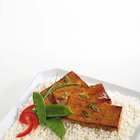
Is All Chinese Food Fattening?

How to Explain Something Clearly

Top Vegetables With Selenium
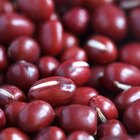
Nutrition Information for Adzuki Beans

The Average Weight of a Boiled Egg

How to Cook Vietnamese Rice Stick ...

Difference Between Cellophane Noodles & ...
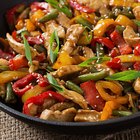
Calories in Moo Shu Vegetable

Signs of a Lack of Respect Between ...

How to Clean Clear Bands on Braces

Which Is Healthier, Lima Beans or ...

How to Season Edamame
The Best Companion Foods for Vitamin & ...

The Difference Between a Promise Ring & ...
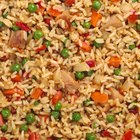
How to Cook Arroz Chaufa
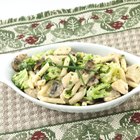
Calories in 1 Cup of Pasta Primavera

A List of Foods That Contain Choline
References
Writer Bio
Tyson Alexander has been writing professionally since 2007. He writes articles for various websites on topics of psychology, the brain and mental health. He holds a Master of Arts in psychology from Carleton University in Ottawa, Canada.